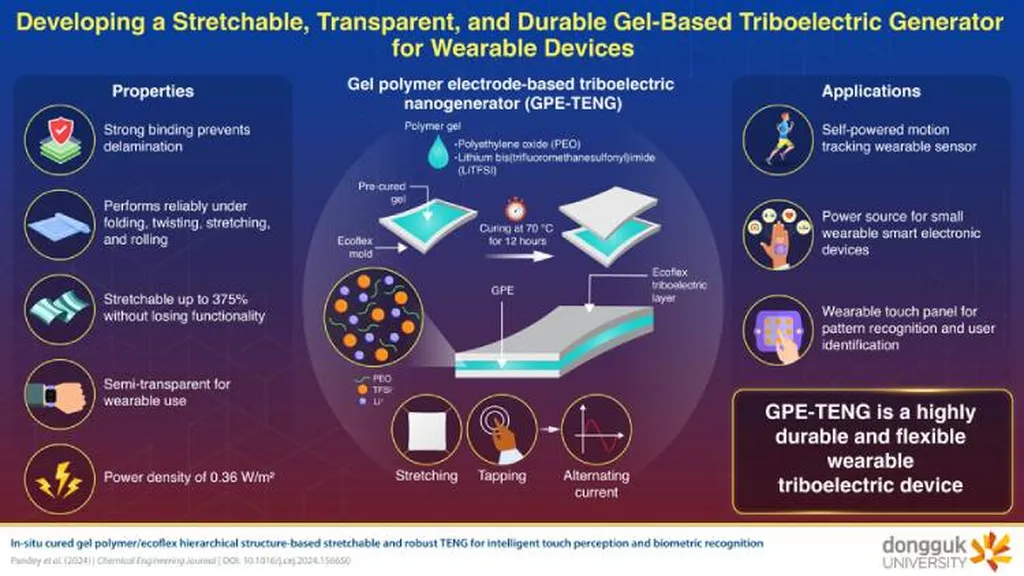In a significant stride towards sustainable energy solutions, researchers have developed an eco-friendly, flexible piezoelectric nanogenerator (PENG) that could revolutionize the way we power wearable electronics and Internet of Things (IoT) devices. The innovation, led by Shivender Singh Bhandari from the Department of Applied Physics at Delhi Technological University, leverages the unique properties of graphitic carbon nitride (g-C₃N₄) to enhance the performance of PVDF-HFP polymer films.
Piezoelectric nanogenerators convert mechanical energy from the environment—such as movement, vibration, or pressure—into electrical energy. This technology holds immense potential for powering small, portable devices without the need for traditional batteries, reducing waste and improving sustainability. Bhandari and his team embedded varying concentrations of g-C₃N₄ nanofillers into PVDF-HFP films, a flexible polymer known for its piezoelectric properties. The results were striking: the open-circuit voltage and short-circuit current of the nanocomposite films increased significantly compared to pure PVDF-HFP, with the highest improvements observed at 5 wt% g-C₃N₄ content.
“By incorporating g-C₃N₄ into the polymer matrix, we were able to promote the electroactive phase, which directly enhances the piezoelectric performance of the material,” Bhandari explained. “This breakthrough not only improves energy harvesting efficiency but also paves the way for more sustainable and self-powered electronic devices.”
The implications for the energy sector are profound. As the demand for wearable technology and IoT devices continues to grow, so does the need for reliable, long-lasting power sources. Traditional batteries contribute to electronic waste and environmental degradation, making sustainable alternatives like PENGs increasingly attractive. The flexibility and efficiency of these nanocomposite films could enable the development of lightweight, self-powered devices that operate in diverse environments, from medical wearables to industrial sensors.
“This research highlights the potential of g-C₃N₄-based nanocomposites to drive innovation in energy harvesting,” Bhandari added. “We envision a future where our devices are powered by the very movements and vibrations around us, reducing our reliance on conventional energy sources.”
The study, published in the journal *Discover Materials* (translated to English as “Explore Materials”), underscores the importance of interdisciplinary research in advancing sustainable technologies. As the world shifts towards greener energy solutions, innovations like these could play a crucial role in shaping the future of the energy sector. By harnessing the power of nanotechnology and eco-friendly materials, researchers are not only improving device performance but also contributing to a more sustainable future.

